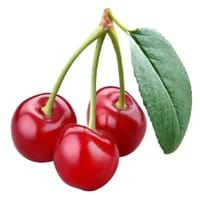Health Benefits
Boosts immune system, Boosts respiratory health, Cancer prevention, Digestive aid, Piles treatment
Arthritis prevention, Cancer prevention, Gout treatment, Regulation of heart rate, Treatment of osteoarthritis
General Benefits
Beneficial in improving nerve function, Protects against parasites and worms, Relieves pain
Anti oxidant properties, Anti-inflammatory properties, Controls blood pressure, Cures headache, Digestive aid
Skin Benefits
Anti-aging benefits, Brightens and lightens complexion, Exfoliates skin, Hydrates skin, Treatment of dark spots
Anti-aging benefits, Brightens and lightens complexion, Skin rejuvenation, Treatment of dark spots
Hair Benefits
Prevents hair loss
Acts as moisturizer, Protects hair, Regulates hair growth, Rejuvenates scalp
Allergy Symptoms
Abdominal pains, Breathing difficulty, Dizziness, Eczema, Fainting, Hives, Itching, Nasal congestion, Swelling of face, Tingling sensation in mouth, Vomiting
Anaphylaxis, Breathing difficulty, Fainting, Itching, Nasal congestion, Nausea, Swelling of mouth, tongue or lips, Tingling sensation in mouth, Vomiting, Wheezing
Side Effects
Decrease in blood sugar levels, Induces acid reflux, Allergic reaction, Tooth decay, May form gallstones
Abdominal cramps, Allergic reaction, Bloating, Intestinal gas
Best Time to Eat
Along with meal, As a snack in the late afternoon, Don't consume at night and before bed, Strictly avoid empty stomach
Best if taken as a breakfast (or empty stomach), As a snack in the late afternoon, Don't eat after meal, Morning time (before lunch)
Vitamin B5 (Pantothenic Acid)
Vitamin C (Ascorbic Acid)
Vitamin K (Phyllochinone)
Phytosterol
Not Available
Calories in Fresh Fruit with Peel
Not Available
Calories in Fresh Fruit without Peel
Not Available
Calories in Canned Form
Not Available
Season
Spring, Summer
Summer
Varieties
PKM 1, Urigam, Hasanur, Tumkur prathisthan, DTS 1 and Yogeshwari
Evan, Mesabi, Meteor, Northstar, Montmorency and Mongolian
Color
Brown, Reddish-brown
Red
Shape
Curving Cylinder
Round
Taste
Sour-Sweet
Sweet-Sour
Origin
Africa
Europe, Western Asia
Soil Type
Loam, Sandy, Sandy loam, Well-drained
Sandy
Climatic Conditions
Humid to dry, Rainfall, Warm to hot climate
Cold
Facts about
- Tamarind is used to prevent body odor.
- African children use the tamarind seeds in games.
- No cases of tamarind toxicity or allergy reported till date.
- Using 1/4 tablespoon of almond extract with cherries, brings out the real flavor of cherries.
- In earlier times, serving cherry pie with ice cream was prohibited.
- 23 April is National cherry cheese cake day.
Top Producer
India
Turkey
Other Countries
Africa, Australia, Brazil, China, Mexico, Nigeria, Sudan, Taiwan
Albania, Armenia, Austria, Azerbaijan, Belarus, Croatia, Denmark, Germany, Hungary, Iran, Italy, Macedonia, Moldova, Poland, Russia, Serbia, Ukraine, United States of America, Uzbekistan
Top Importer
United States of America
Germany
Top Exporter
Thailand
Poland
Botanical Name
Tamarindus indica
Prunus cerasus
Synonym
Tamarindo, tamarindus
Not Available
Subkingdom
Tracheobionta
Tracheobionta
Division
Magnoliophyta
Magnoliophyta
Class
Liliopsida
Magnoliopsida
Species
Tamarindus indica
P. cerasus
Generic Group
Tamarind Sub
Rose
Difference Between Tamarind and Sour Cherry
We might think that Tamarind and Sour Cherry are similar with respect to nutritional value and health benefits. But the nutrient content of both fruits is different. Tamarind and Sour Cherry Facts such as their taste, shape, color, and size are also distinct. The difference between Tamarind and Sour Cherry is explained here.
The amount of calories in 100 gm of fresh Tamarind and Sour Cherry with peel is Not Available and 50.00 kcal and the amount of calories without peel is 239.00 kcal and Not Available respectively. Thus, Tamarind and Sour Cherry belong to High Calorie Fruits and Low Calorie Fruits category.These fruits might or might not differ with respect to their scientific classification. The order of Tamarind and Sour Cherry is Fabales and Rosales respectively. Tamarind belongs to Fabaceae family and Sour Cherry belongs to Rosaceae family. Tamarind belongs to Tamarindus genus of Tamarindus indica species and Sour Cherry belongs to Prunus genus of P. cerasus species. Beings plants, both fruits belong to Plantae Kingdom.









